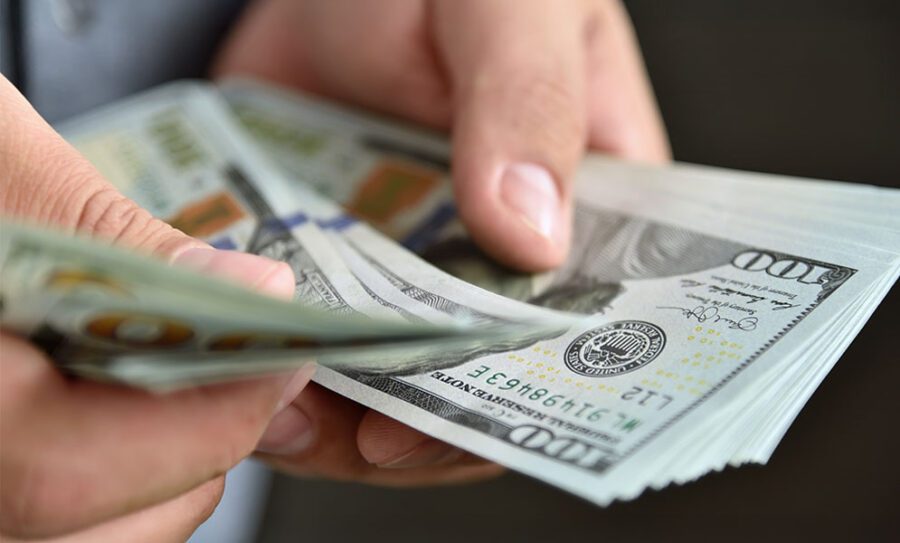What is the School Choice trap?
This question was answered by James Lindsay in Episode 135 of Refining Rhetoric with Robert Bortins, in which the two discuss the economic and social implications of School Choice policies. During their conversation, Lindsay makes the case that School Choice invites big business to corporatize education by buying and selling out private schools for the reward of voucher funds.
What is corporatized education? Corporatized education refers to an education market that has been captured or bought by big businesses, thereby centralizing all private education under the influence of powerful corporations. Currently, private education is alive and well in the open market, largely free from market manipulations that come from artificial dollars. Artificial dollars are dollars that are not market-driven. They are contrived and ejected into the economic market through grants, subsidies, or welfare programs. School Choice would disrupt the growth of this successful market by incentivizing corporate education by guaranteeing a customer base, revenue stream, and education monopoly.
School Choice Guarantees a Customer Base
The first way School Choice incentivizes corporatized education is by guaranteeing a customer base. Every state in America has a compulsory attendance law for education. This means that the government requires every child to receive a formal education for a particular period of their youth. For example, the state of Alabama requires children to receive schooling from ages six to seventeen. In Montana, however, the age requirements are seven to sixteen. Though states have different age ranges, the general principle remains the same: by law, all children must receive a formal education. Imagine how lucrative it would be for private businesses to capture the market in which 74 million children are required to engage! Why has this not happened already? One simple reason: most school-aged children are already captured.
While it is true that there are 74 million American school-aged children, a vast majority of these children do or will attend public schools. In 2022, 49.6 million children attended public schools rather than private schools. Because public schools are entirely owned by the government, the real education market available to corporations is a fraction of all children. However, this is changing rapidly. Because School Choice programs publicly fund individual students and send them out into the private education sector, children become cash cows vulnerable to the corporate market.
School Choice Guarantees a Revenue Stream
The second way publicly funded School Choice programs incentivize corporatized education is by guaranteeing a revenue stream. School Choice, in its most basic form, is a government subsidy. A subsidy is a government grant given to businesses or industries with the aim of keeping the market competitive. This economic “gift” sounds promising when trusted representatives offer it; however, we would do well to remember the effects of subsidies: subsidies manipulate markets and raise prices.
If you flood a market with artificial funds, it will inflate just like a swimming pool rises to overflowing when water is continuously added to it. The market, which is always responding to supply and demand, will fluctuate accordingly, and prices will dramatically increase due to the additional funds available for buying.
Apply this principle to the education market: If the government gives every, or even most, school-aged child voucher money under School Choice policies, the schools, curriculum providers, teachers, universities, tuition fees, and extracurricular activities will all respond to the market and increase price. So, what happens when one captures the process of supply and demand by buying up the education market?
In this scheme of corporate market capture, the government collects your taxpayer money and redistributes it into the pockets of students. Students use those funds to pay for schools or supplies, and the owners of the schools and supply stores pocket the money that was taken from you. By capturing this market, private corporations will ultimately benefit by enjoying the artificial dollars “funding students, not systems.” Most people may not take issue with this cycle because if the schools are successful, they are owed the money given to them. But what if those schools are all owned by the largest corporations that have no interest in providing excellent education?
School Choice Guarantees an Education Monopoly
This leads us to the third way School Choice incentivizes corporatized education by guaranteeing an education monopoly. When the government dumps millions of artificial dollars into the market economy, whoever captures the market captures the dollars. However, only those who have the money, power, and influence to buy out all competition and create a market monopoly will successfully accomplish this. This is why big corporations and billionaire businessmen are the only competitors who can ultimately survive in a subsidized market.
Though, perhaps it wouldn’t be such a bad thing for corporations to own education. This optimistic view, though hopeful, is entirely ignorant. Consider this hypothetical: The education market has been almost entirely subsidized across America through School Choice programs. Millions of government funds are floating around the market, waiting to be funneled into someone’s pocket. So, the economic sharpshooters, big corporations, seize the opportunity and purchase private schools to the tune of millions. James Lindsay outlines the consequences of this with these words,
“Small schools and co-ops and start-up schools and charter schools; the ones that are successful get bought out. The ones that are failing get driven out of business. And what you have is 50 to 70% of the education market after a decade of being locked up in a large corporation that owns all the schools in the area, something like Walmart of schools… You can’t take your kid out because the other schools in the school choice network are also owned by the same corporate conglomerate. You don’t have a school board… What are you going to do? Call customer service? Maybe you do call customer service [but] you’re not going to get any recourse there. If that school decides to be woke because of an ESG policy that dictates its stock prices, your kids are getting woke education. And if it chooses to be fascist because somehow that became fashionable, your kids are getting a fascist education. You have no recourse left whatsoever if you end up with a corporate educational monopoly that’s stucking off of state money that you are required to pay as your taxes by law.”
The consequences of corporate conglomerates capturing education are twofold:
First, an unholy alliance forms between the government and private corporations. As Lindsay said, “Corporate entities that have made friends with the government get extraordinarily rich off of taxpayer money that you’re then kind of guilted into paying because that’s what’s good for, you know, the political program of the state.” The government takes your money to give to big business, but nothing is a free exchange. So, the relationship between the powerful entities becomes one of “I’ll scratch your back if you’ll scratch mine.” Thus, both the government and businesses will be taking advantage of you to enrich and empower themselves.
Second, your child’s education is then subjected to the same variables as all other economic markets: supply and demand. What is fashionable? What is profitable? The consideration of “what is true, good, and beautiful” is not a concern of those who deal exclusively in dollar signs. As James Lindsay put it, “Their incentive to compete switches at some point, and you’re no longer competition to attract customers, you’re competing to destroy competitors. It switches from a positive sum competition to a negative sum competition.”
The Slippery Slope Fallacy
Some may claim that this argument commits the slippery slope fallacy. It assumes that the worst chain of events might happen if a particular action is taken; they retort. To this, James Lindsay responds, “It’s only ever worked the way I have described every time.” Consider how agriculture and farmland were subsidized and then promptly bought up by billionaires or how healthcare was financed by the government through Medicare and Medicaid and is now enriching private corporations. All of this is due to the government’s dollar.
In both examples, government subsidies have incentivized private interests to buy a place at the table. And at that table, the state and business have harmed free markets, hurt industries, and forsaken citizens. How can we invite this manipulation into our children’s education?
The Fallacy of Good Intentions
Some others may argue that their congressman is a good Christian man, so he would never allow these bad things to happen through School Choice. He is well-intentioned and is only going to help suffering students—not hurt healthy ones. This, of course, is the fallacy of good intentions. Just because you will a good outcome, does not guarantee its result. However, there is another way that this reasoning is insufficient. The question citizens must ask is not “Will my congressman let this happen?” but “How could my congressman stop this from happening?”
When big business buys up private competition and takes over entire markets, what can your congressman do to stop it? The only possibility would be to take complete control of the free market so that they can audit who can buy and sell and what can be bought and sold. Clearly, this solves one problem by inviting an even bigger one into the market. In this way, School Choice wakes the beast of economic tyranny from its fitful rest.
Education Independence Guarantees Free Markets
School Choice is a trap because it incentivizes corporatized education by guaranteeing a customer base, revenue stream, and education monopoly. The rules of economics are constant and universal: subsidies manipulate markets and increase prices; artificial funds are attained by the powerful; corporate competition outweighs customer concerns. American citizens and politicians must take into account the guaranteed results of School Choice subsidies and refuse to create this dangerous incentive structure. Thankfully, there is a better way: choose education independence! By valuing free markets and rejecting government funding, Americans will ensure they avoid the trap of subsidies, so neither the state nor big business can overtake the education of 74 million children.





